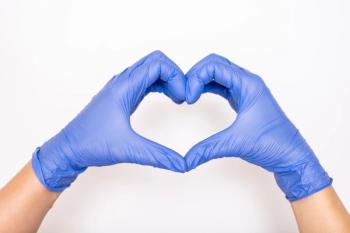
Patients With Cancer Should ‘Keep Moving Through Treatment’ to Potentially Mitigate Side Effects
Exercising during and after cancer treatment remains important for patients and building up endurance over time can help make goals less daunting, an expert said.
Although the time of day a cancer survivor exercises may impact physical function and performance, exercise at any time can benefit these patients especially for long-term side effect management, study results demonstrated.
Researchers of the study, which was published in PLOS One, aimed to assess the nuances of exercise like timing, but a major takeaway from their findings was that it wasn’t as important as working out in itself.
“The fact is any time they’re going to exercise is the best time for them to exercise,” Dr. Pamela A. Hansen, medical director of the Linda B. and Robert B. Wiggins Wellness and Integrative Health Center at Huntsman Cancer Institute at the University of Utah in Salt Lake City, told CURE®. “The most important thing is that it happens; timing of how it happens is something interesting that we’re looking at. … What we do know about exercise is that
In particular, researchers analyzed data from 233 cancer survivors, of whom 37.3% habitually engaged in morning exercise, 34.3% in afternoon or evening exercise and 29.3% engaged in exercise during both times of day.
Hansen added that her team’s original hypothesis — habitual morning exercise training would confer greater improvements in weight management variables compared with habitual afternoon/nighttime exercise — was based on several factors, one of which was motivation.
“One thing that we know is that people who exercise in the morning regularly are typically the ones who stick to it long term,” she said. “That’s probably the easiest time of day for most people to ensure (exercise) gets done. And even in looking at this group (in the study), most of the people were consistent morning exercisers. When it doesn’t happen in the morning, a lot of times, life gets in the way and it ends up not being as consistent.”
All cancer survivors in this study participated in a
“The POWER program meets with patients a couple times a week, but patients are asked to do aerobic exercise on their own several other days per week,” Hansen said. “Those other days — if they’re doing their aerobic activity — were not really taken into account (in this study). We’re only looking at the times they were exercising with us here in the POWER program doing their resistance training.”
Hansen added that she and her team started this particular program in 2005 to address issues related to exercise in cancer survivors.
“A lot of cancer survivors are not sure what is safe and what they should be doing, especially in situations where they’ve got lymphedema, boney metastases or things that they’re not sure what is safe and what is not safe to do,” she explained. “And really, exercise is safe and very effective prior to treatment, during treatment and after treatment. It is important. It can help reduce the side effects of the treatment, especially fatigue and deconditioning. After the treatment, too, we have some people come (into the clinic) years afterwards with
The program in which cancer survivors participated in this study followed current guidelines for exercise for most patients. This included both resistance training for all major muscle groups two to three days per week and aerobic exercise with a goal of 150 minutes per week at a moderate intensity. For some people, that may seem like a lot of exercise per week, but Hansen emphasized the importance of building up stamina and being consistent.
“You don’t want to turn off patients by projecting (a goal) that just seems unrealistic,” Hansen said. “We oftentimes will start with five minutes twice a day, and we really stress that consistency is the most important piece, whether you’re having a great day, whether you’re having a really (bad) day. Just try to be consistent and do a little bit because a little bit each day will allow the body to accommodate and gradually build up. Pretty soon, you’re up to 10 minutes.”
Hansen offered patients critical advice regarding exercise for patients with cancer and survivors.
“Exercise is a really important piece to maximizing health and function before, during and after cancer treatment,” Hansen said. “It can be very helpful in reducing future risk of cancer as well. Whether you get individual guidance, just going on walks or doing some resistance training independently, I would encourage everyone to keep moving through treatment. Don't take it lying down.”
For more news on cancer updates, research and education, don’t forget to




